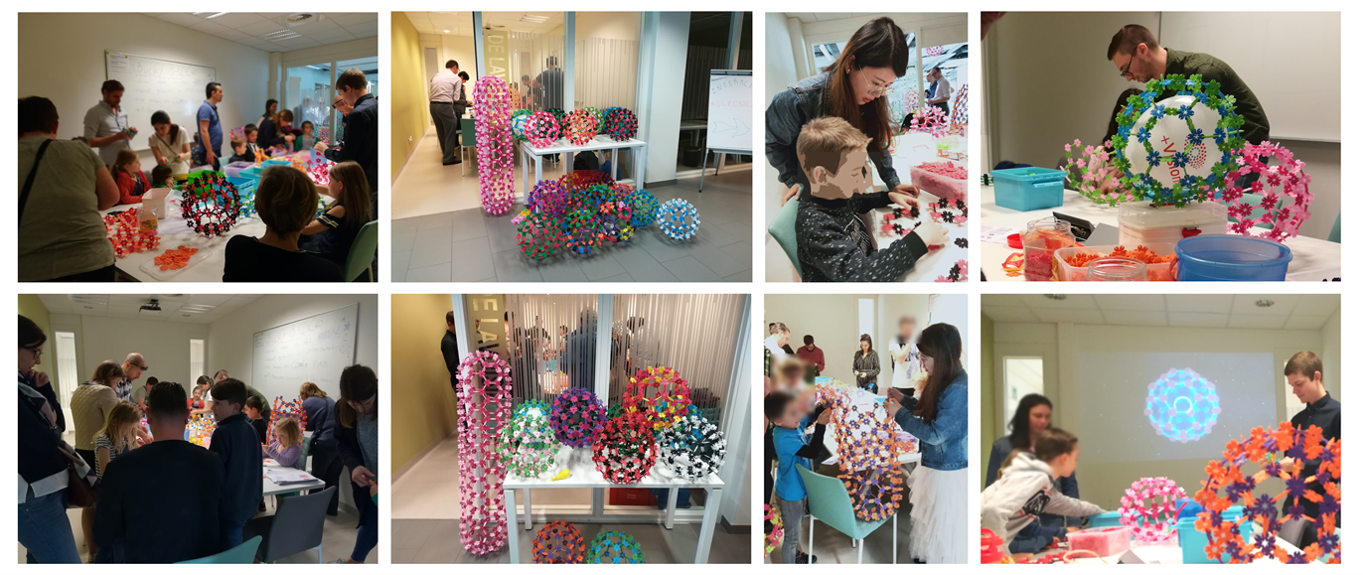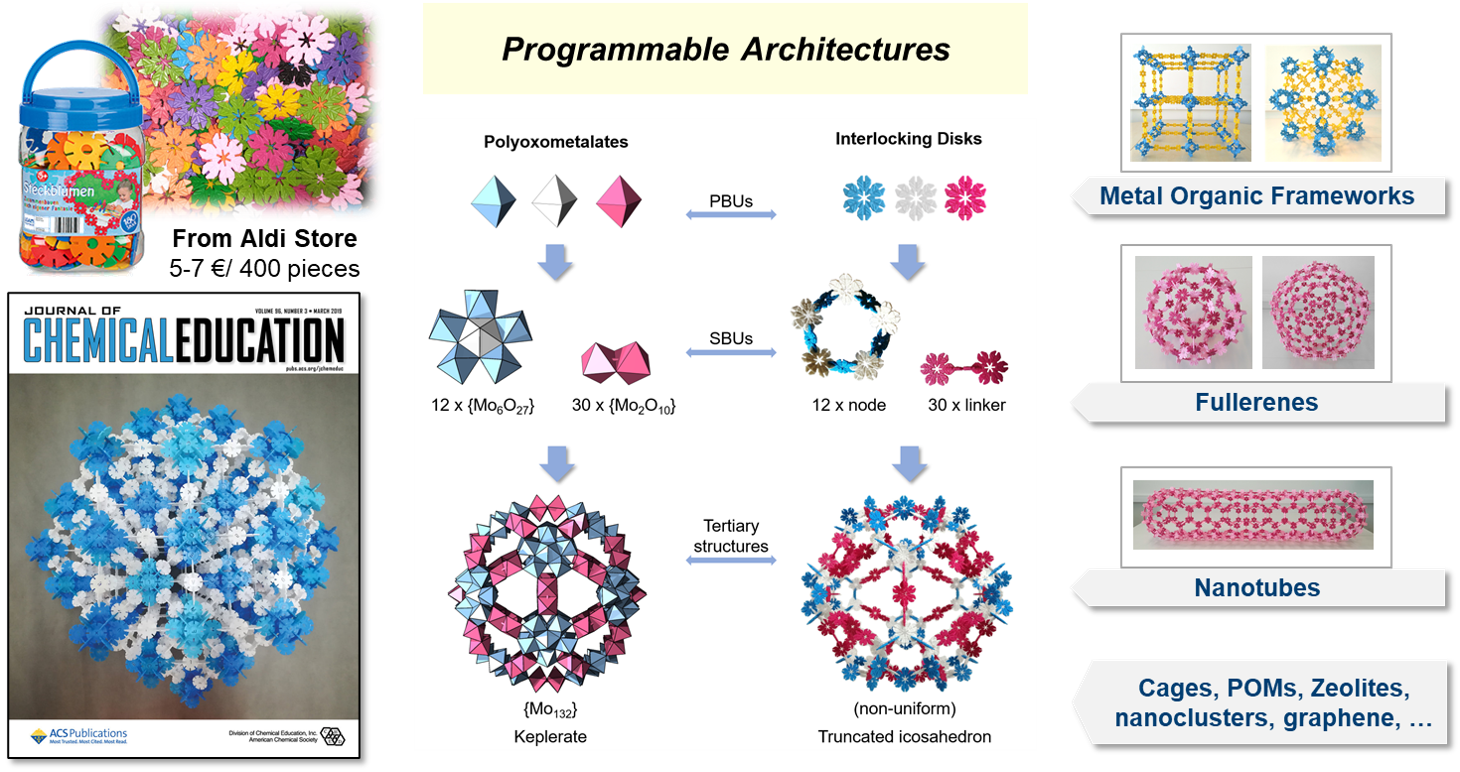Nanoscale materials are a challenging subject in chemistry education, with their complex structures requiring hands-on manipulatives for effective teaching. However, traditional modelling kits such as ball-and-stick kits or zometools are not always practical or cost-effective, particularly for constructing large multi-atom models like polyoxometalates, nanotubes, and mesoporous materials. Similarly, linearly binding legoidal toys are not always suitable for creating the spatial connectivity and flexibility required for constructing chemistry-relevant assemblies.
To overcome these limitations, we have found that plastic interlocking disks (ILDs) can be an excellent alternative. Originally designed for training dexterity in young children, ILDs are inexpensive and readily available. We have demonstrated that they can be used to construct chemistry-relevant polyhedral and reticular assemblies that are typically several decimeters in size, making them ideal for classroom demonstrations.
What’s more, the 8- and 6-fold symmetrically grooved ILDs offer unique opportunities for teaching spatial thinking and structure programming abilities. The hands-on experience of working with semi-robust ILDs provides a tactile understanding of the emerging strain effects and anticipation on the construction stability. As a result, the combination of visual and sensational components makes ILDs a discovery-based learning tool that is increasingly popular in outreach workshop activities.




